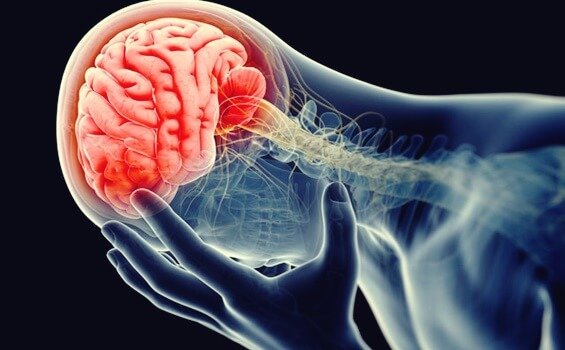Chronic Sadness and Dysthymia: Is There a Cure?


Written and verified by the psychologist Valeria Sabater
Persistent depressive disorder doesn’t always respond to a medicine-based approach. The chronic apathy, hopelessness, and depressive moods have a more complex origin than we would have thought. When we apply neuropsychology to the study of dysthymia, it reminds us that this condition relates to a series of brain processes and social situations which we need to take into account.
When we review the incidences of dysthymia worldwide, we find something that we can’t ignore. Clinical studies tell us that this disorder affects around 5% of the population, especially women. Specialists know for a fact that there are many people who live their lives in constant suffering but don’t take the step of asking for help. This helplessness and dejection become so chronic that it’s very likely that this percentage is greater than we think.
Dysthymia, or more recently named “persistent depressive disorder”, affects women to a greater degree and is characterized by mood swings, fatigue, and recurrent sadness. These symptoms can drag on for years.
On the other hand, since the last volume of the Diagnostic and Statistical Manual of Mental Disorders (DSM-V) changed the term “dysthymia” to “persistent depressive disorder”, they haven’t stopped carrying out more and more research into the condition. The medical and scientific community is aiming to be able to define and understand this condition a lot better.
It’s a much milder disease than major depression. However, given the difficulty in treating this condition, it’s common for many patients, at some point, to end up developing other conditions and mental disorders.

Neuropsychology of dysthymia (persistent depressive disorder)
In the 60s, psychiatrist Robert Spitzer coined and defined this clinical condition. What he did was differentiate it from terms that he found didn’t accurately describe the condition. Before Spitzer had carried out this research to improve the classification of mental illness, dysthymia was considered to be a type of personality, not an illness. People were described as depressive, neurotic, and weak-minded.
From the 1960s to the present day, experts are continuing to refine their findings on persistent depressive disorder in order to get to the root of the problem. Nowadays, for a person to receive this diagnosis, the following qualifying conditions must be met:
- Depressive mood with a minimum duration of 2 years.
They must be suffering from at least two of the following symptoms:
- Loss or increase of appetite.
- Insomnia or hypersomnia.
- Lack of energy or fatigue.
- Low self-esteem.
- Concentration deficit or difficulty making decisions.
- Feelings of hopelessness.
- Distress, continuous suffering.
- There are no psychotic or manic incidents; there are no other organic illnesses; nor are there suspicions of major depression.

What’s happening in my brain if I’m diagnosed with persistent depressive disorder (dysthymia)?
When a person receives this diagnosis, they often experience relief. This isn’t surprising at all. They have often been living with this shadow over their lives since their adolescence. All those years of emptiness that invaded their lives through any means necessary. All those years with a sadness that engulfed their whole lives and everything that they did.
The neuropsychological studies of dysthymia tell us that this condition has an origin. Experts believe that stress and increased catecholamines and hormones such as cortisol can affect our ability to be able to control our moods.
- Clinical research, and especially the advancement of brain imaging technologies such as magnetic resonance imaging, have given us the opportunity to discover very revealing data. For example, the presence of low activity in the areas of the brain related to problem-solving, sleep regulation, appetite, and even sociability.
- Most of these processes are focused on a very special area: the anterior cingulate cortex (pictured below), responsible for administering emotional control. There’s not a lot of activity in this area in patients with persistent depressive disorder.

The cingulate cortex and the von Economo neurons
- The anterior cingulate cortex is part of a network that’s responsible for generating multiple processes. It helps us process information, both sensory and emotional. It helps us keep our attention focused while we move or interact with others. It helps us maintain an interest in our environment, and this acts as a bridge between our emotions and our attention.
- The von Economo neurons are also found in this area. Many of us have heard about mirror neurons, but the von Economo neurons are especially important for one key reason. These nerve cells connect with others to facilitate and process information related to pain and hunger. They also stimulate the creation of “social emotions” such as trust, love, resentment…
- Apes, dolphins, whales, and elephants also have von Economo neurons. These animals get depressed just like us and exhibit symptoms of so-called “social suffering” in their behavior. Factors such as loneliness, rejection, or loss of a position in the hierarchy of their group can generate sadness and emotional pain. As we can see, this is extremely interesting data.

Conclusion: in search for answers
Now we know what the neuropsychological research into dysthymia has shown us. The question now is: what makes the areas related to this disorder stop functioning as they should? And, even more importantly, how can we regulate them again? One of the main problems is that these people have been living with this condition for so many years. Also, it doesn’t always respond to a medicine-based approach. This is why experts need to do more research into this condition.
For example, researchers know there’s a hereditary aspect. Likewise, a feeling of isolation, or of having suffered a loss, or the simple fact of not feeling useful in any given context, can generate these chronic states of suffering.
The neuropsychological research into dysthymia tells us that many patients often get better when they take on new projects. The simple fact of introducing change into our lives can generate a real breakthrough. If we feel involved with something, or someone, again, that generates positivity and hope.
Don’t give up. As experts learn more and more about these conditions, they will be able to give better answers. In the meantime, let’s just focus on the fact that dysthymia is treatable. With a good treatment and a psychotherapeutic approach, we can overcome it.
This text is provided for informational purposes only and does not replace consultation with a professional. If in doubt, consult your specialist.








